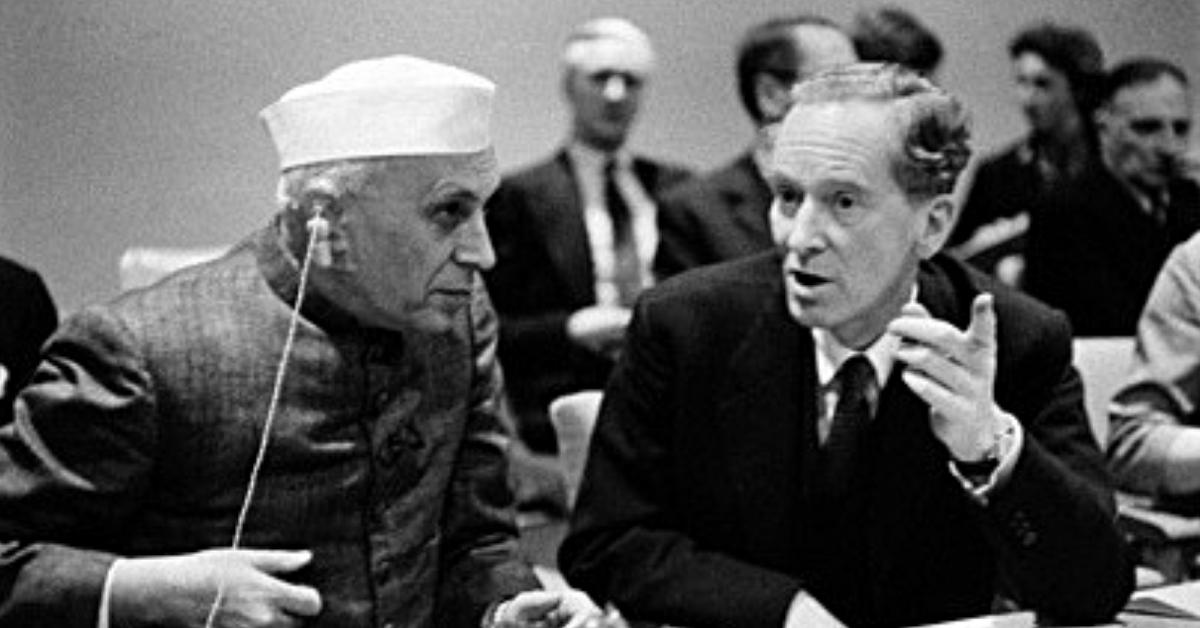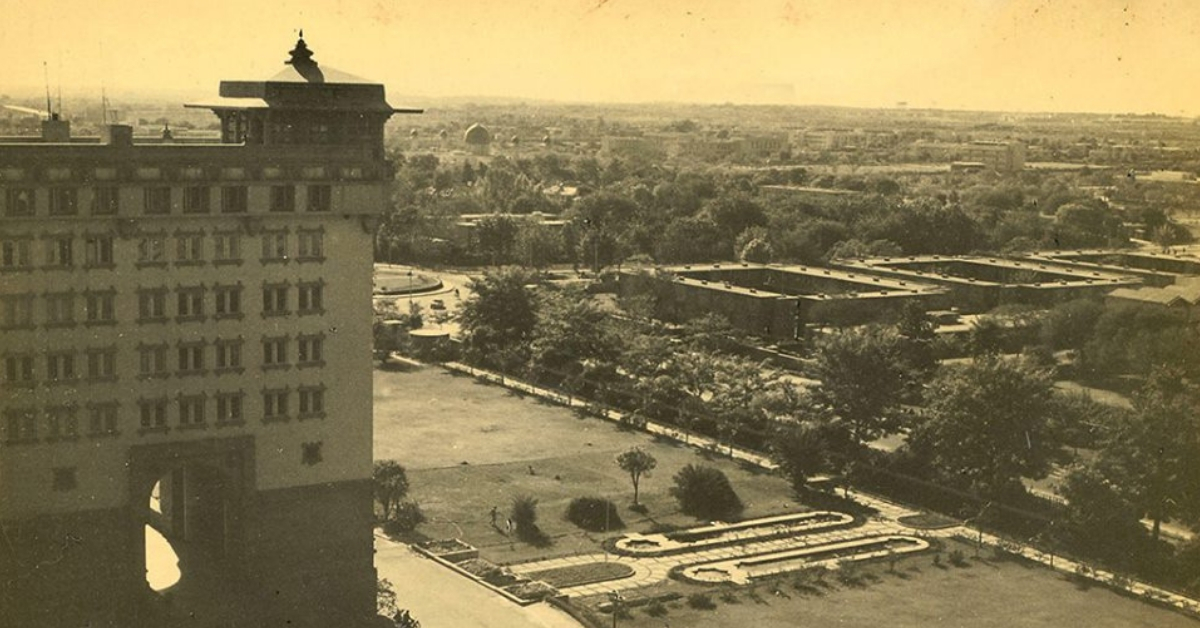A PM, a Pickle Tree & the Tale of India’s First State-Owned 5 Star Hotel!
"It is only Nehru's vision that could have created a hotel as spectacular as The Ashok... The hotel spoke of the gumption of the country at that time, and for that, it was destined to be iconic."

Standing tall in the heart of Delhi with a rich history behind its glamorous architecture is The Ashoka (later christened as The Ashok). Over the 62 years since it was built, The Ashok might have taken a backseat among five-star hotels in the national capital, but the story of how and why the Indian Government built it never fails to fascinate.
It was 1955 and India was a young country eager to make its mark on a global platform. PM Jawaharlal Nehru was at a UNESCO forum in Paris when he suggested that India could host the summit the next time. The organisers accepted the invitation, but Nehru had failed to note a logistical issue back at home.
The UNESCO summit meant important delegates from across the world would visit India. High security and five-star quality food and lodging were necessary to host all of them.
But India, still trying to revive itself from the plunder of the British, had no such hotel in Delhi.

So the Prime Minister decided the nation would build a hotel and a convention centre for the upcoming event- one that could host delegates and the elite UNESCO convention.
And so construction began. The first hurdle was funding. In those days, rulers of the former princely states had the means to contribute to government projects. The newly christened ‘The Ashoka’ became one such project.
“Panditji said the princes should contribute money to make a good hotel in Delhi. We have nothing to count. He said I will give you land but will you all put in your money? And so we did,” Dr Karan Singh, Kashmir’s former Sadar-i-Riyasat (Head of State, now Governor) had said.
“We spent about Rs 10 to 20 lakh and then ran out of money. We went back to Panditji, and the government had to chip in,” he added. And the government eventually paid more than Rs 2 crore for it all.
In total, at that time, The Ashoka cost Rs 3 crore to be constructed. The government funds spent, and oversight on it had made it India’s first state-owned five-star hotel.

BE Doctor, an architect, based in Mumbai, was assigned to design and execute the construction of the 25-acre hotel premises. Nehru took a personal interest in overlooking its progress.
Mayank Austen Soofi writes in the Live Mint, “Right now, as we stand there trying to absorb the spirit of India’s first state-owned five-star hotel, the Ashok is unperturbed, its stateliness still recalling the time when Jawaharlal Nehru rode on horseback around its premises, paying close attention to the smallest details, including the flower beds. That was when the hotel had just been built, on a rocky forest hillock, in a year, just in time to accommodate the delegates of the ninth session of UNESCO, held in the Capital in 1956.”
You may also like: How a 200-YO Anglo-Maratha Battle Paved the Way for the Mumbai-Pune Highway!
A mango tree personally planted by PM Nehru in The Ashoka’s garden still provides mangoes from which all the pickles and jams used in the hotel are made!
The hotel includes 550 rooms, 111 suites and Delhi’s largest pillar-less convention hall. Doctor made sure that India’s glorious past was reflected in The Ashoka’s architecture. It has arches styled like the Moghul monuments, a Natraj Suite, Kashmir suites, Rajput suites, a presidential suite and the hotel itself, obviously, is named after the legendary emperor Ashoka the Great.
India’s first government-owned five star was nothing short of a style icon.

Habib Rehman, the former managing director of ITC hotels, had once remarked, “It is only Nehru’s vision that could have created a hotel as spectacular as The Ashok… The hotel spoke of the gumption of the country at that time, and for that, it was destined to be iconic.”
Even after the UNESCO summit, The Ashoka has hosted many delegates from across the world, including former US President, Bill Clinton. A Saudi Arabian ambassador had made the presidential suite of The Ashoka his home for three years!
In the 1980s, the Oscar-winning film, Gandhi was also shot in the hotel.
Over the years, however, several privately owned hotels have gained a more prominent presence in Delhi, sidelining the iconic Ashok by a large margin.
You may also like: The Intriguing Story of How Hindi Emerged as The Lingua Franca of Arunachal!
According to a guest who attended its Golden Jubilee anniversary, “The hotel, at 50 B in New Delhi’s Chanakyapuri overlooking the posh Diplomatic Enclave, has plodded through as many as 50 years of life since then, but en route, has not only lost the sparkle of 1956 but also defeated its great history. Sad that no Indian heart today turns fonder at the mention of The Ashok, no heads of state check in there anymore. Like any other state-run establishment, it has long reeled under the weight of demands for free Sarkari service from the politicians and their minions, red tape and a fading semblance of maintenance. At least that is the general idea on the street.”
(Edited by Vinayak Hegde)
Like this story? Or have something to share?
Write to us: [email protected]
Connect with us on Facebook and Twitter.
If you found our stories insightful, informative, or even just enjoyable, we invite you to consider making a voluntary payment to support the work we do at The Better India. Your contribution helps us continue producing quality content that educates, inspires, and drives positive change.
Choose one of the payment options below for your contribution-
By paying for the stories you value, you directly contribute to sustaining our efforts focused on making a difference in the world. Together, let’s ensure that impactful stories continue to be told and shared, enriching lives and communities alike.
Thank you for your support. Here are some frequently asked questions you might find helpful to know why you are contributing?


This story made me
-
97
-
121
-
89
-
167













